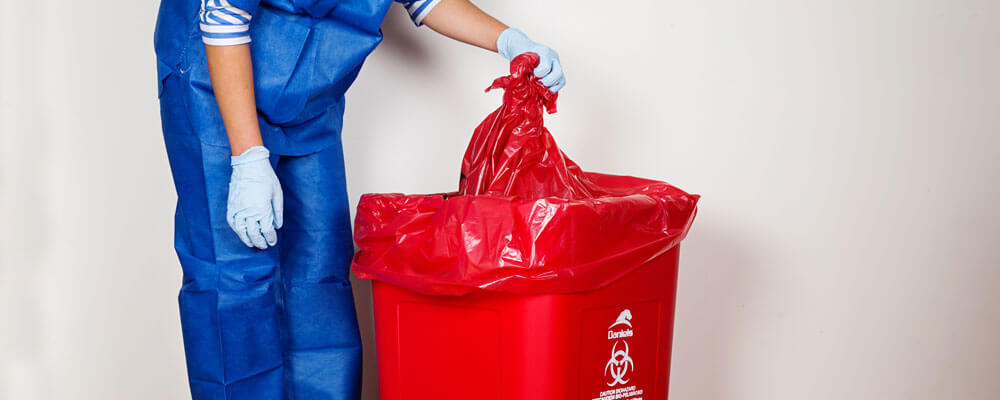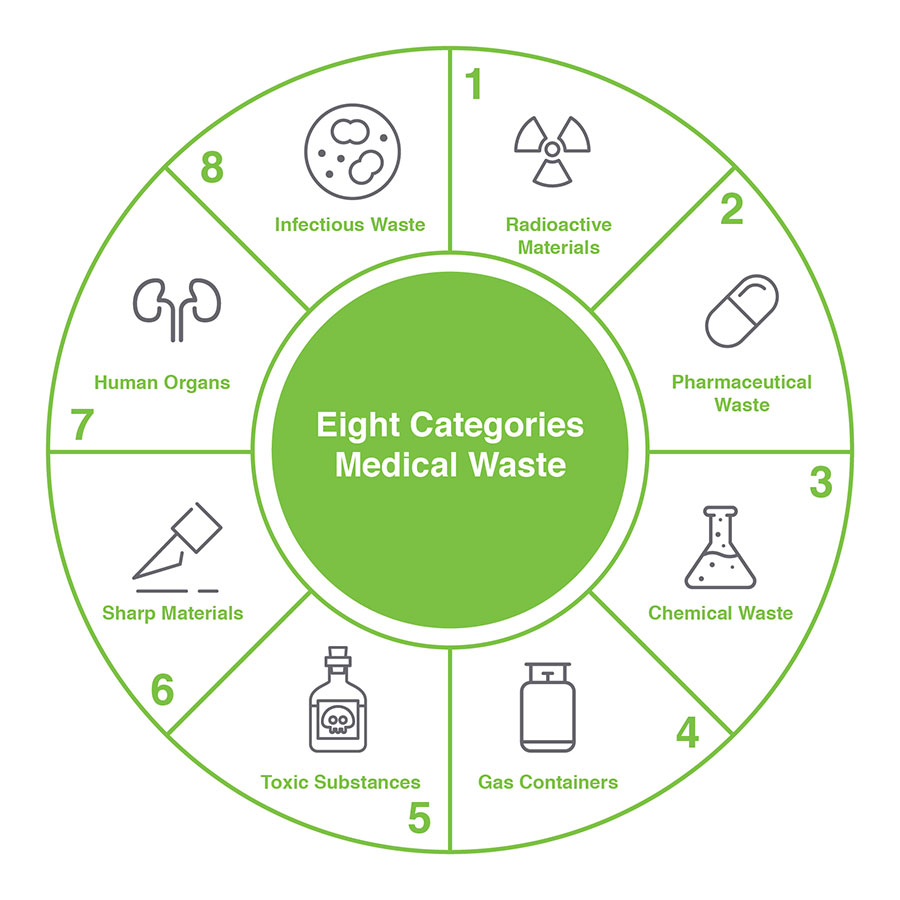Medical Waste Removal Excellence: Elevating Safety And Security Standards in Your Facility
Remain Ahead of Laws: Expert Suggestions on Medical Waste Disposal
In a world where the health care market is constantly progressing, it is critical for clinical facilities to remain ahead of policies when it comes to the appropriate disposal of medical waste. From recognizing the various categories of clinical waste to carrying out the ideal collection and segregation approaches, this discussion will give valuable insights and workable pointers to assist facilities stay in advance of laws in the ever-changing landscape of clinical waste disposal.
Understanding Medical Waste Categories
Comprehending medical waste classifications is vital for proper disposal and administration in medical care centers. Clinical waste describes any type of waste created by medical care activities that may present a danger to public health and wellness or the atmosphere. It is essential to classify medical waste accurately to ensure its risk-free handling, treatment, transportation, and disposal.
There are a number of groups of clinical waste that healthcare centers need to be familiar with. One of the most common categories include contagious waste, pathological waste, sharps waste, pharmaceutical waste, and chemical waste. Each group has particular guidelines and guidelines for its appropriate management and disposal.
Contagious waste consists of materials infected with blood or other bodily fluids, such as handwear covers, dress, and research laboratory cultures. Pathological waste refers to human cells, organs, or body parts that call for special delivery and disposal. Sharps waste includes utilized needles, syringes, and other sharp things that can trigger injury and transmit infections. Pharmaceutical waste comprises expired, extra, or infected medicines that need mindful handling and disposal. Chemical waste consists of solvents, disinfectants, and other chemical compounds utilized in healthcare facilities.
Staying Up-To-Date With Regulatory Modifications
Staying existing with regulatory modifications is essential for health care centers to guarantee compliance and appropriate management of medical garbage disposal. medical waste removal service. With policies constantly advancing, it is important for healthcare facilities to remain updated to stay clear of fines, fines, and prospective damage to the environment and public health and wellness
To remain ahead of governing changes, healthcare centers need to establish a system for tracking and monitoring updates. This can be done by subscribing to governing e-newsletters, going to seminars and workshops, and actively taking part in sector associations. In addition, facilities need to assign a personnel participant or team responsible for staying informed and distributing details to relevant stakeholders.
Routine interaction with regulative agencies is additionally essential. Medical care centers must establish partnerships with local, state, and federal firms to ensure they know any kind of modifications in regulations that might influence their waste administration techniques. This can be done through routine meetings, participation in public remark durations, and positive interaction with regulative agencies.
Furthermore, health care facilities must think about partnering with waste monitoring firms that focus on clinical garbage disposal (medical waste disposal services with WasteX). These companies are commonly fluent in the current regulations and can give guidance and assistance to guarantee conformity
Implementing Correct Collection and Segregation Techniques
To effectively handle medical garbage disposal, health care centers need to develop appropriate collection and partition techniques according to governing guidelines. Implementing these methods guarantees the risk-free handling and disposal of possibly hazardous products, safeguards the atmosphere, and reduces the threat of injuries and infections to health care workers and the public.
Appropriate collection and segregation methods entail using designated containers and classifying systems. Health care centers must give clearly classified containers for different sorts of medical waste, such as sharps, contagious waste, pharmaceutical waste, and non-hazardous waste. These containers must be color-coded and clearly marked to avoid complication and promote easy identification.
In addition, health care centers ought to educate their team on the correct procedures for gathering and segregating clinical waste. This consists of informing them on the various kinds of waste, the appropriate containers to utilize, and the relevance of adhering to guidelines and guidelines. Normal training sessions and correspondence course should be conducted to make sure that personnel stay up-to-date on ideal practices.
Additionally, health care centers ought to establish a system for regular collection and disposal of medical waste. This may involve partnering with qualified waste management firms that specialize in clinical garbage disposal. These companies will make sure that the gathered waste is moved and taken care of in conformity with governing needs.
Selecting the Right Disposal Approaches

Incineration is one of one of the most typical and effective approaches for disposing of particular kinds of medical waste, such as pathological waste and sharps. It includes the regulated combustion of waste at heats, lowering it to ash. Nonetheless, incineration can release unsafe contaminants into the air and add to air pollution.

Various other disposal methods include chemical treatment, microwave therapy, and landfilling. Chemical therapy includes making use of chemicals to sanitize and counteract the waste. Microwave treatment utilizes microwave power to warm and sanitize the waste. Landfilling involves hiding the waste in an assigned garbage dump location (medical waste disposal services with WasteX). Landfilling must be the last resort due to the possible threat of contamination to soil and groundwater.
Guaranteeing Conformity Through Documents and Training
After very carefully thinking about the appropriate disposal approaches for medical waste, healthcare centers need to make sure compliance with regulations and lessen environmental effect by carrying out effective documentation and training treatments. This action is essential in keeping a secure and lasting environment for both healthcare employees and the basic public.

Health care employees who handle clinical waste ought to get ideal training on waste segregation, dealing with, and disposal procedures. By providing extensive training, healthcare facilities can empower their team to make informed decisions and lessen the danger of incorrect waste disposal.
Conclusion
To conclude, remaining ahead of guidelines in clinical waste disposal is vital for healthcare facilities. medical waste removal. Recognizing the various groups of clinical waste, remaining upgraded with governing changes, applying appropriate collection and segregation approaches, selecting the suitable disposal methods, and guaranteeing compliance via paperwork and training are all necessary steps. By complying with these guidelines, healthcare companies can efficiently get rid of and take care of of medical waste in a secure and responsible fashion
From comprehending additional hints the different groups of clinical waste to implementing the ideal collection and partition techniques, this discussion will certainly provide workable tips and useful understandings to assist facilities stay in advance of regulations in the ever-changing landscape of medical waste disposal. Discover More - medical waste disposal services with WasteX
The most common categories consist of transmittable waste, pathological waste, sharps waste, pharmaceutical waste, and chemical waste. Health care centers must give clearly identified containers for various types of medical waste, such as sharps, infectious waste, pharmaceutical waste, and non-hazardous waste. Medical care facilities need to establish an extensive system to videotape and track all elements of medical waste disposal, consisting of types of waste generated, amounts, and disposal methods used. Health care employees who deal with medical waste needs to receive suitable training on waste segregation, dealing with, and disposal treatments.